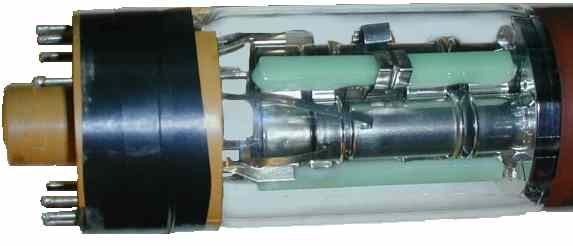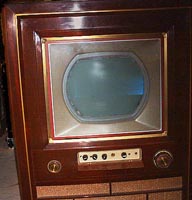Although most of the neck is coated with aquadag, it is clear that this tube doesn't have an electrostatic convergence element, designated as G4 on a true 15GP22. [Recall that pin 13 is the G4 connection.] Apparently, Zenith was experimenting with magnetic convergence using this modified 15GP22 design. The pale green glass support insulators are clear glass in my 15GP22, which may indicate, but doesn't prove, that this is not an RCA supplied gun. It's still possible however, even likely, that the rest of this experiment is of RCA origin. 
|

